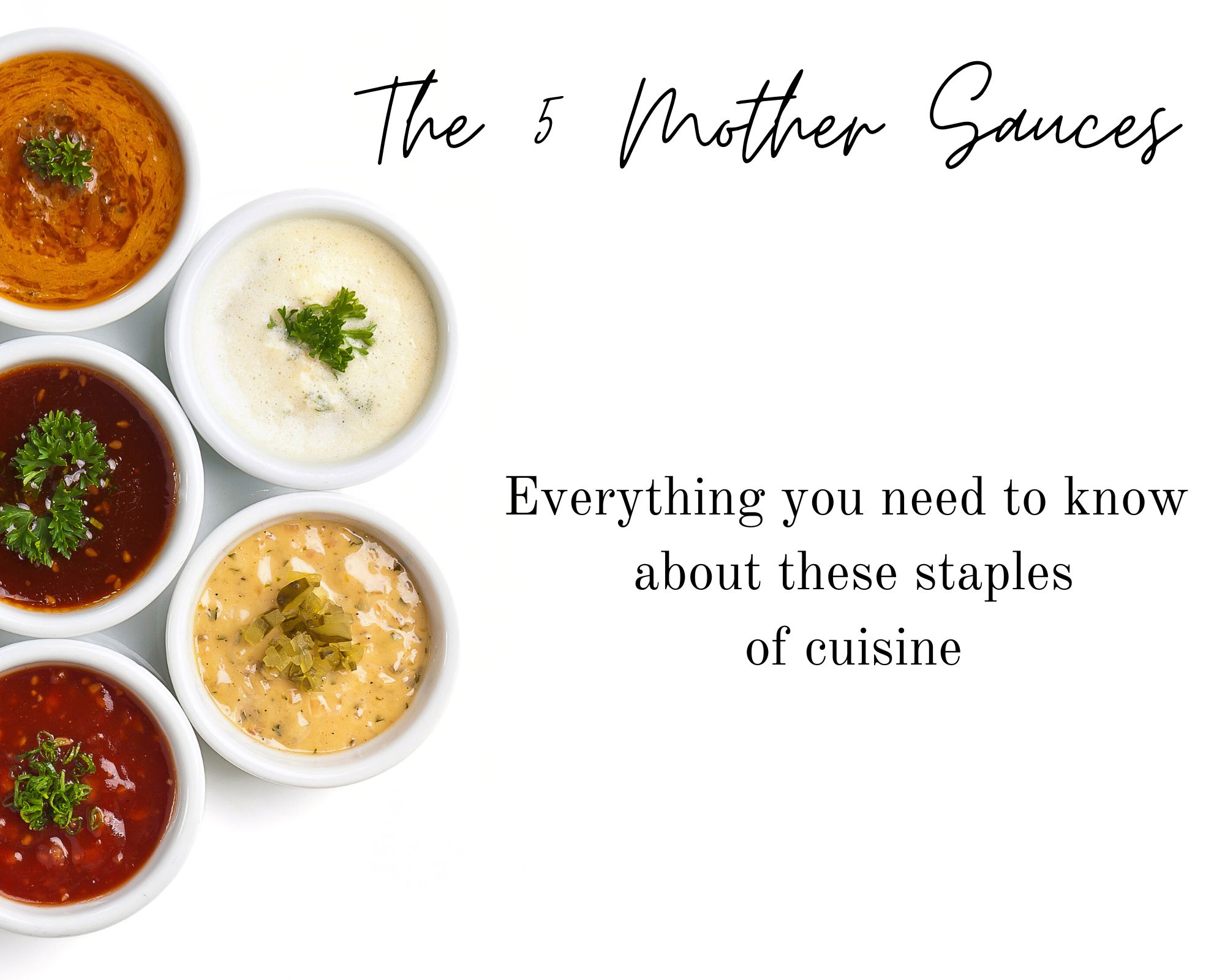The five mother sauces are the heart of the kitchen. They create all other sauces and condiments, adding depth and richness to food. Knowing how to make and use the mother sauces will elevate your culinary prowess. Some of the sauces are harder to make than others, but after a couple of tries, you will be whipping them up in no time.
Chef Marie Antoine Carême is one of the earliest pioneers of classical cuisine and one of the most pivotal figures in culinary history. He published the groundbreaking “The Art of French Cuisine in the 19th Century” in 1833. This work includes the five mother sauces, the building blocks of all subsequent sauces and condiments.
An easy way to remember what the mother sauces are is to use the acronym BETH V. Nope, that’s not the name of your Instacart shopper, it stands for béchamel, espagnole, tomato, hollandaise, and velouté. Of course, each sauce is made differently, so let’s examine them one by one and learn how to incorporate them into your culinary skillset.
What Is a Sauce?
To begin with, let’s define a sauce. All sauces contain a liquid, thickener, and seasoning. Roux is used as the thickener in four out of five mother sauces. Classic roux is equal parts flour and butter, though the amount can be adjusted, and another fat such as oil is sometimes seen in different recipes that call for it.
The longer a roux cooks, the more flavorful it becomes. The slight variation in cooking times adds depth and color to a sauce. Light-colored roux is cooked for 3-5 minutes, medium roux is cooked for 6-7 minutes, and dark-colored roux is cooked for up to 15 minutes.
The recipe formula can be adjusted to create variations or to add or detract flavors. Sauces harmonize the flavors and texture of the food they are served with. A BLT is just not the same without mayo.
Sauces can be served cold (like in the case of mayonnaise), lukewarm (like a pesto), or warm (as in a mushroom or marinara sauce). No matter the sauce or the temperature at which it is served, they are all derived from Chef Carême’s codified sauces.
Béchamel
Béchamel is a white, warm, and hearty sauce. It is also one of the easiest to make. You will notice béchamel as the white sauce in dishes like pot pie, gravy, lasagna, or a white macaroni and cheese. Classical dishes use béchamel on fish, chicken, or eggs.
Making béchamel is straightforward. A roux is prepared with flour and butter, and the paste is warmed over a stovetop to remove the floury taste. Milk is the most common liquid used, and seasonings to finish include nutmeg, salt and pepper, and cloves. The result is a thick and luscious, clean-tasting sauce.
Espagnole
Espagnole is a dark brown sauce and often serves as the base for a demi-glace. It also starts with a roux with a slight twist. The roux is cooked over medium heat until it browns, stirring often to ensure it doesn’t scorch.
Browned mirepoix (a mixture of carrots, celery, and onions) is added once the roux is ready, and then beef stock. The combination of the browned roux and mirepoix gives espagnole its classic richness. The sauce complements beef bourguignon, lamb, duck, and other richly flavored proteins.
Tomato
Also known as sauce tomate, this is probably the most recognized sauce, particularly in Italian cuisine. Sauce tomate can have a thick or thin viscosity and is often used on pasta, grilled meats and vegetables, and polenta.
This sauce was originally thickened with roux. Today, it is commonplace to cook tomatoes until they form a thick sauce and flavor them with pork or vegetables. However, if the chef is short on time, they can speed up the process by adding roux.
Hollandaise
Hollandaise is a thick, rich sauce that is the hardest to learn how to make because it breaks, or separates, easily. It is an emulsion, a dispersion of minute droplets of one liquid into another that is not soluble. Hollandaise is the base for many French sauces, like bearnaise sauce.
In the case of Hollandaise, the emulsion is between butter and eggs. Egg yolks are suspended in butter while being stirred together. Hollandaise is usually not seasoned, but cayenne pepper, lemon juice, or white wine vinegar can be added for additional flavor and depth. It is served with eggs, over benedicts, lobster, or shrimp, alongside steak, or as a part of anything called “Oscar”.
Velouté
Velouté, in French, means “velvet,” and that is an apt description of this white sauce. Its delicate flavors pair well with delicate proteins like fish, poultry, and turkey, and its smooth texture is ideal for poached eggs. Vegetarian velouté has also become a popular option recently.
To make a velouté, butter is melted over the stove and flour is added. The roux is whisked until fully incorporated, and it is cooked until it develops a blonde color. White chicken stock is added, a little at a time, until a silky viscosity is reached.
As you can see, the five mother sauces are critical in savory cooking. While it takes some practice to master these sauces, you can become a pro in no time. Knowing how to make any of these sauces will boost your culinary knowledge and open doors to different flavors, textures, and recipes.
